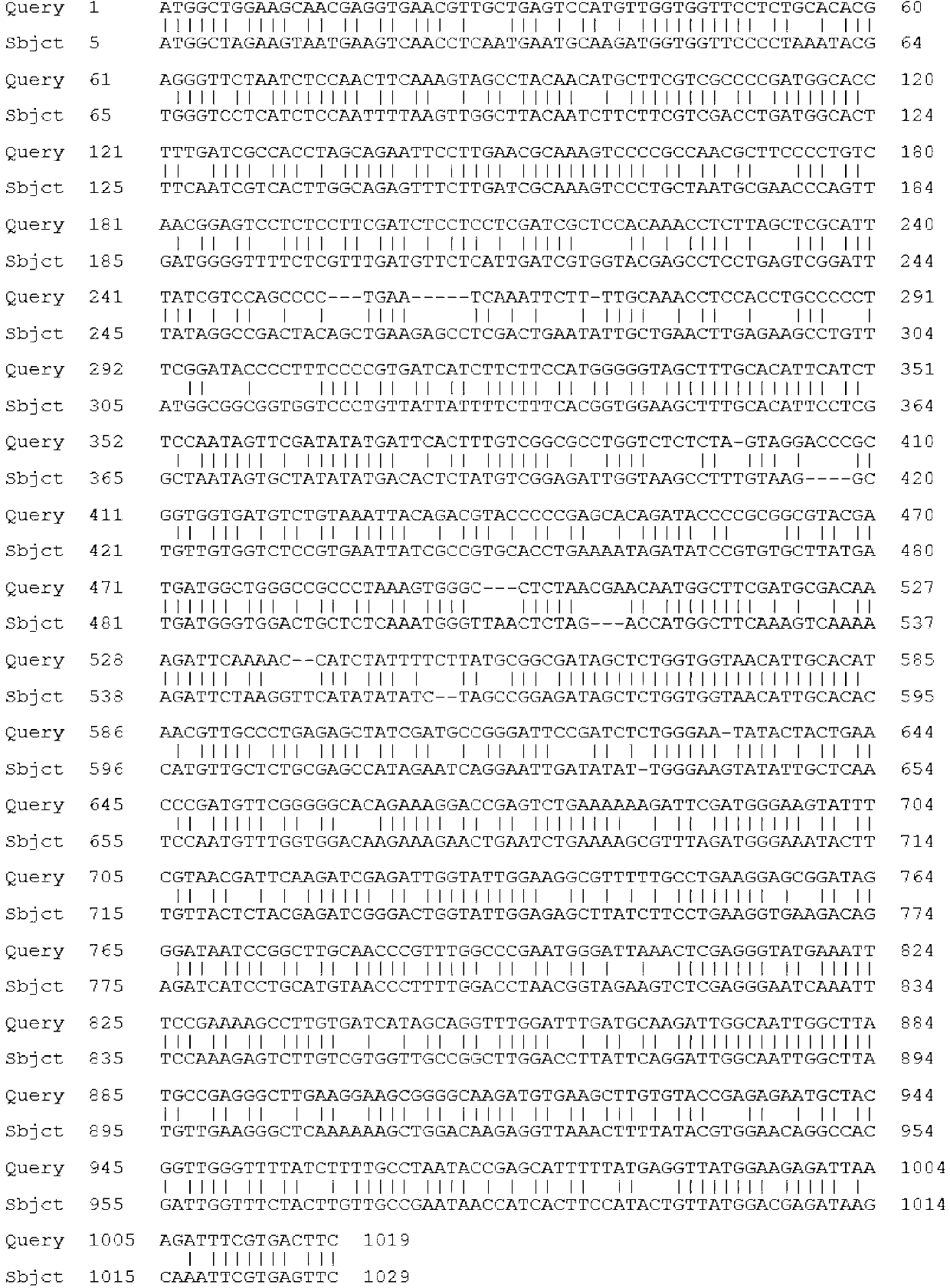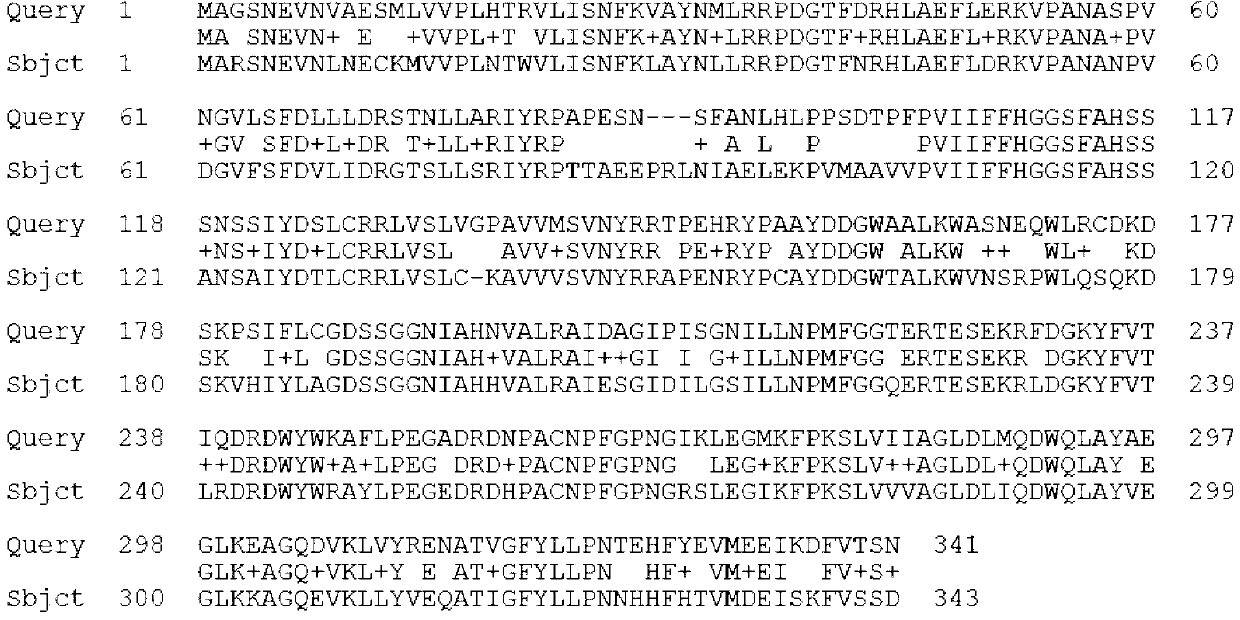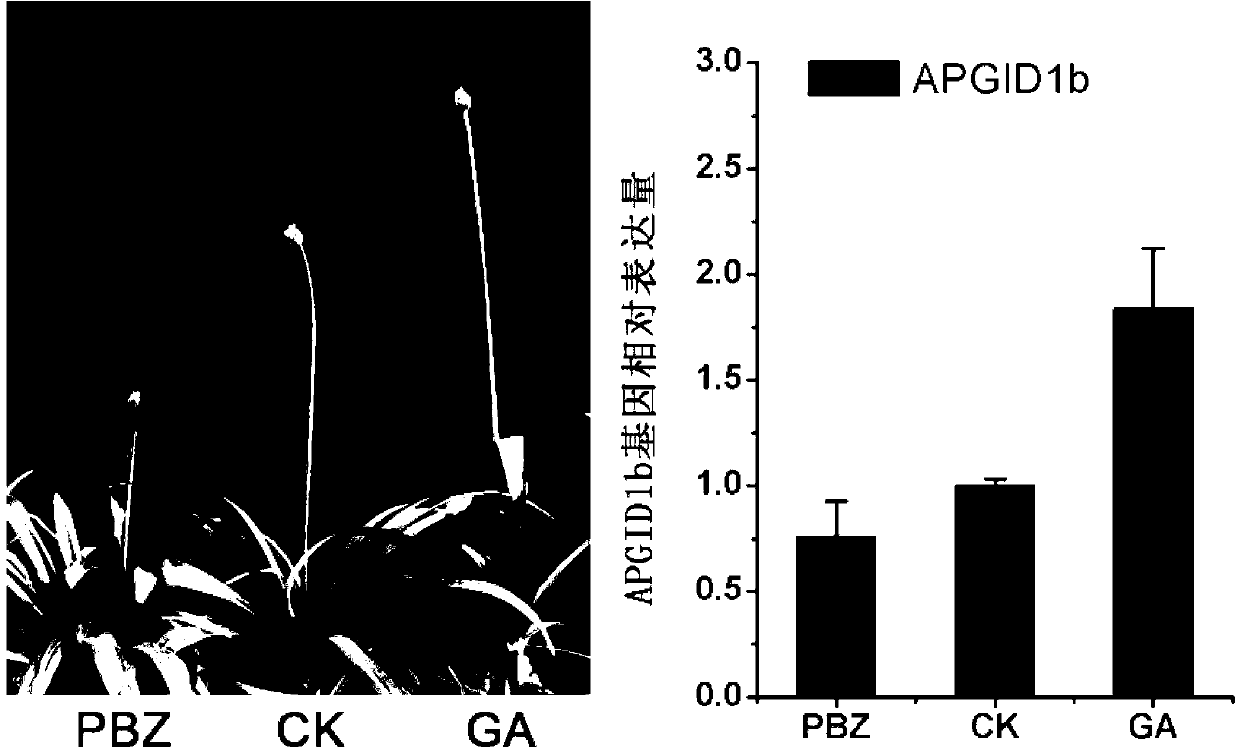Agapanthus praecox gibberellin receptor APGID1b protein, and encoding gene and probe thereof
A technology of Agapanthus gibberellin and coding genes, which can be used in genetic engineering, plant genetic improvement, recombinant DNA technology, etc., and can solve problems such as unexamined
- Summary
- Abstract
- Description
- Claims
- Application Information
AI Technical Summary
Problems solved by technology
Method used
Image
Examples
Embodiment 1
[0041] Example 1 Cloning of gibberellin receptor APGID1b gene from Agapanthus chinensis
[0042] 1. Acquisition of plant material
[0043] Agapanthus was introduced into my country from South Africa in 2000, and the introduction test was carried out in Shanghai. In his master's thesis "Research on the Dwarfing of Agapanthus Potted Plants" published in 2011, Sun Bo introduced the basic biological characteristics and introduction history of Agapanthus in detail. The agapanthus material involved in this embodiment can be obtained through public channels. Callus, embryogenic callus, somatic embryos, and seedlings were cultivated and preserved in a tissue culture room for RNA extraction. Plant healthy Agapanthus plants of the same size in the greenhouse and perform routine management. When the flower buds are formed and the petals are about to crack, various organs and tissues are collected for RNA extraction.
[0044] 2. Extraction of RNA
[0045] Total RNA was extracted wit...
Embodiment 2
[0070] Example 2 , Sequence Information and Homology Analysis of Agapanthus Agapanthus APGID1b Gene
[0071] The new full-length CDS open reading frame sequence of the Agapanthus agapanthus APGID1b of the present invention is 1029bp, and the detailed sequence is shown in the first sequence of SEQ ID NO.1. According to the CDS open reading frame sequence, the amino acid sequence of Agapanthus APGID1b was deduced, with a total of 342 amino acid residues, a molecular weight of 38255.7 Daltons, and an isoelectric point (pI) of 6.11. For the detailed sequence, see the sequence shown in SEQ ID NO.2;
[0072] The CDS open reading frame sequence of Agapanthus agapanthus APGID1b and the amino acid sequence of its encoded protein were nucleated in Non-redundant GenBank+EMBL+DDBJ+PDB and Non-redundant GenBank CDS translations+PDB+SwissProt+Superdate+PIR databases using BLAST program Nucleotide and protein homology searches showed that it has 68% identity with upland cotton GID1b gene ...
Embodiment 3
[0073] Example 3 , Expression differences of Agapanthus agapanthus APGID1b gene at different developmental stages and in different tissues
[0074] 1. Acquisition of materials: At different stages of Agapanthus somatic embryo development (callus; callus; somatic embryo differentiation; seedling formation), laboratory tissue culture materials were used as research objects, and adult The main root, lateral root, stem, scape, old leaf, new leaf, small pedicel, petal, filament, anther, ovary, and seed of the plant were wrapped in aluminum platinum paper and immediately put into liquid nitrogen, and then transferred to Store in a -80°C ultra-low temperature freezer until use. The leaves of Agapanthus plants sprayed with GA and Paclobutrazol (PBZ) were sampled for RNA extraction.
[0075] 2. Extraction of RNA: RNA prep pure Plant Total RNA Extraction Kit (RNA prep pure Plant Kit: Shanghai Laifeng Biotechnology Co., Ltd.) was used to extract RNA from different developmental stages...
PUM
| Property | Measurement | Unit |
|---|---|---|
| molecular weight | aaaaa | aaaaa |
Abstract
Description
Claims
Application Information
 Login to View More
Login to View More - R&D
- Intellectual Property
- Life Sciences
- Materials
- Tech Scout
- Unparalleled Data Quality
- Higher Quality Content
- 60% Fewer Hallucinations
Browse by: Latest US Patents, China's latest patents, Technical Efficacy Thesaurus, Application Domain, Technology Topic, Popular Technical Reports.
© 2025 PatSnap. All rights reserved.Legal|Privacy policy|Modern Slavery Act Transparency Statement|Sitemap|About US| Contact US: help@patsnap.com



